AMBLYforce™ S
AMBLYforce™ S
This predatory mite is helpful in the control of whitefly, with some impact on spider mite populations.
Amblyseius swirskii
Greenhouse Whitefly (Trialeurodes vaporariorum)
Certain Thrips spp.
Tobacco Whitefly (Bemisia tabaci)
Two-Spotted Spider Mite (Tetranychus urticae)
Tarsonemid Mites
Vegetable Crops
Soft Fruits
Ornamental Crops
Hemp/Cannabis
Greenhouses
Indoor facilities
Field and row crops
Interiorscapes
Gardens
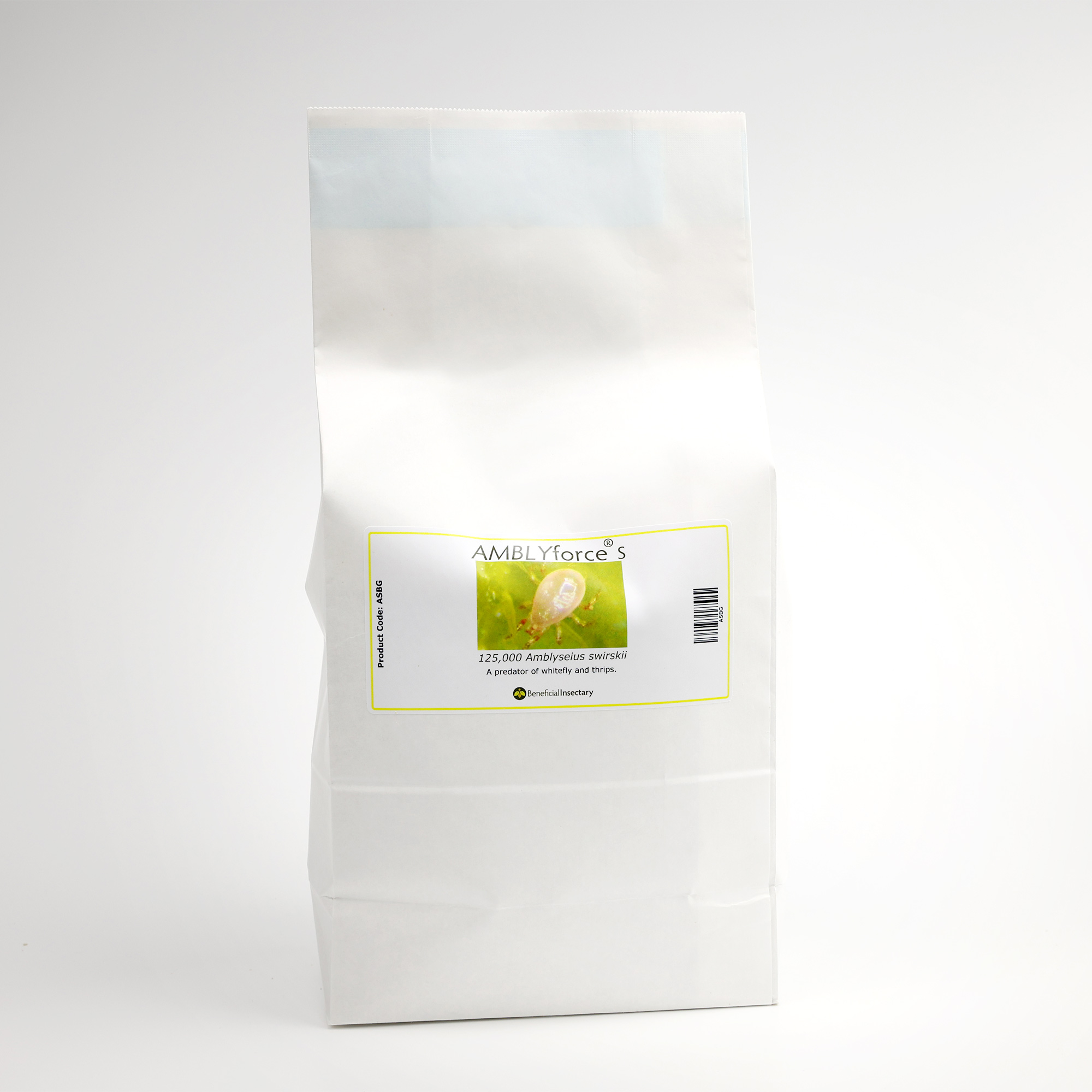
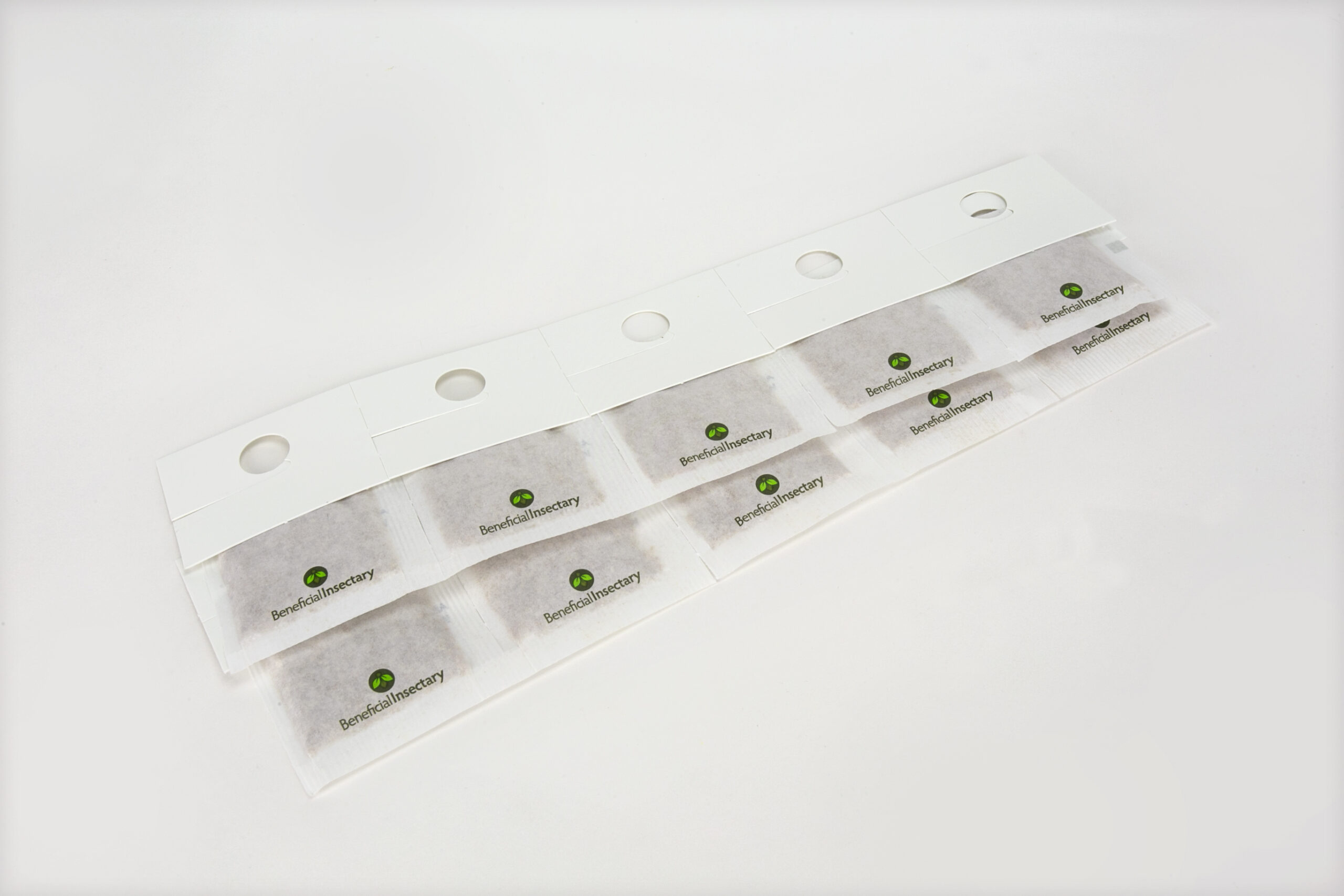
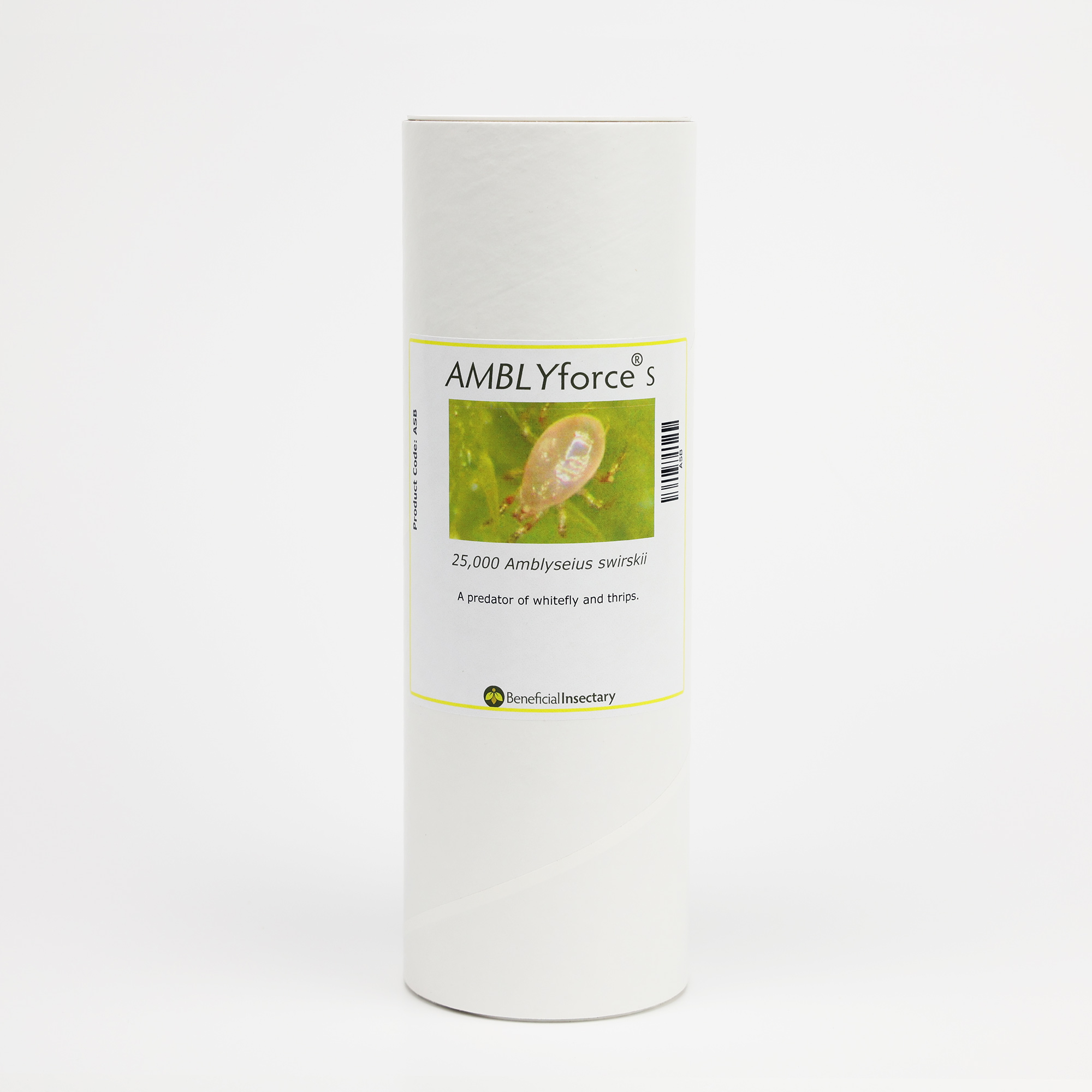
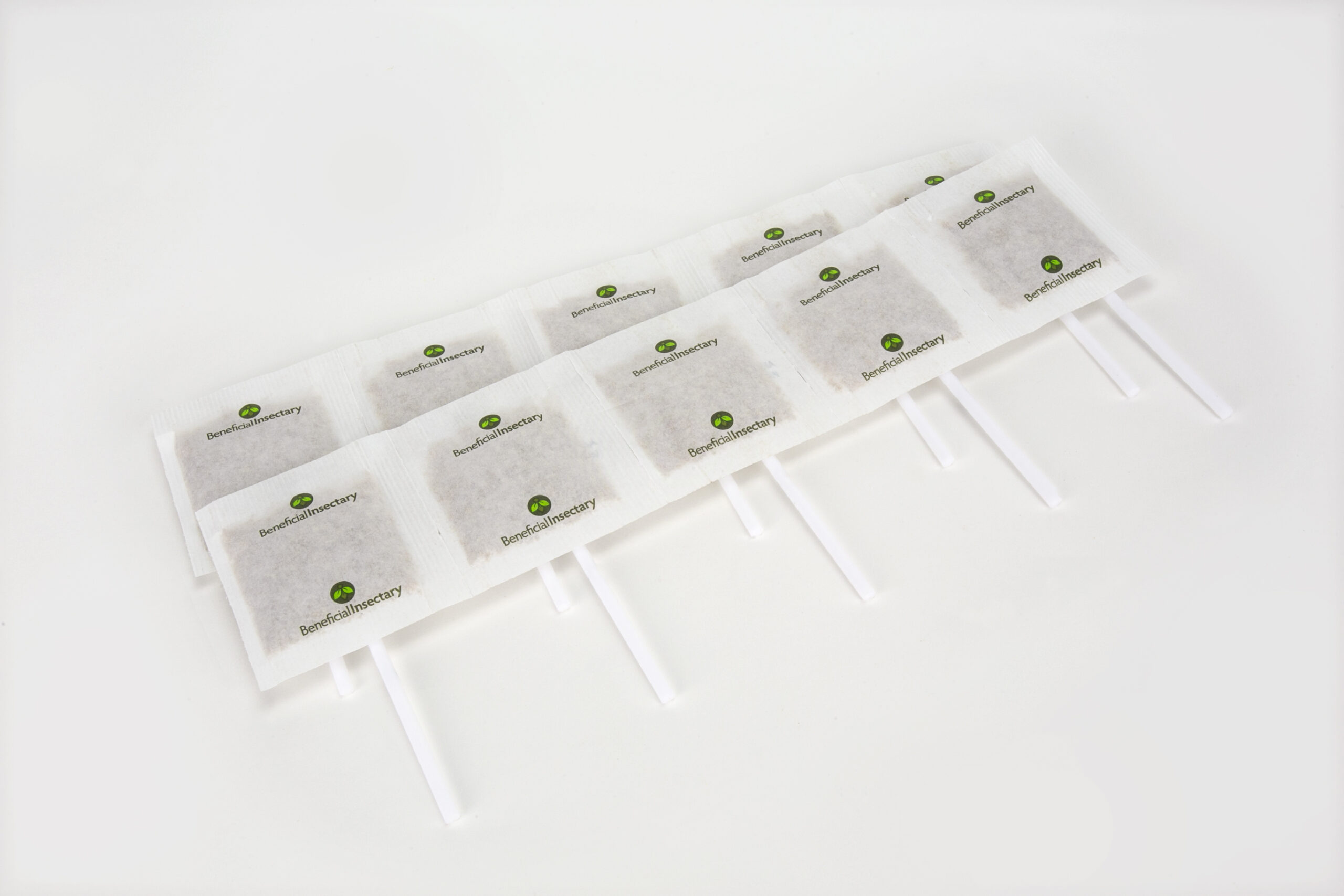
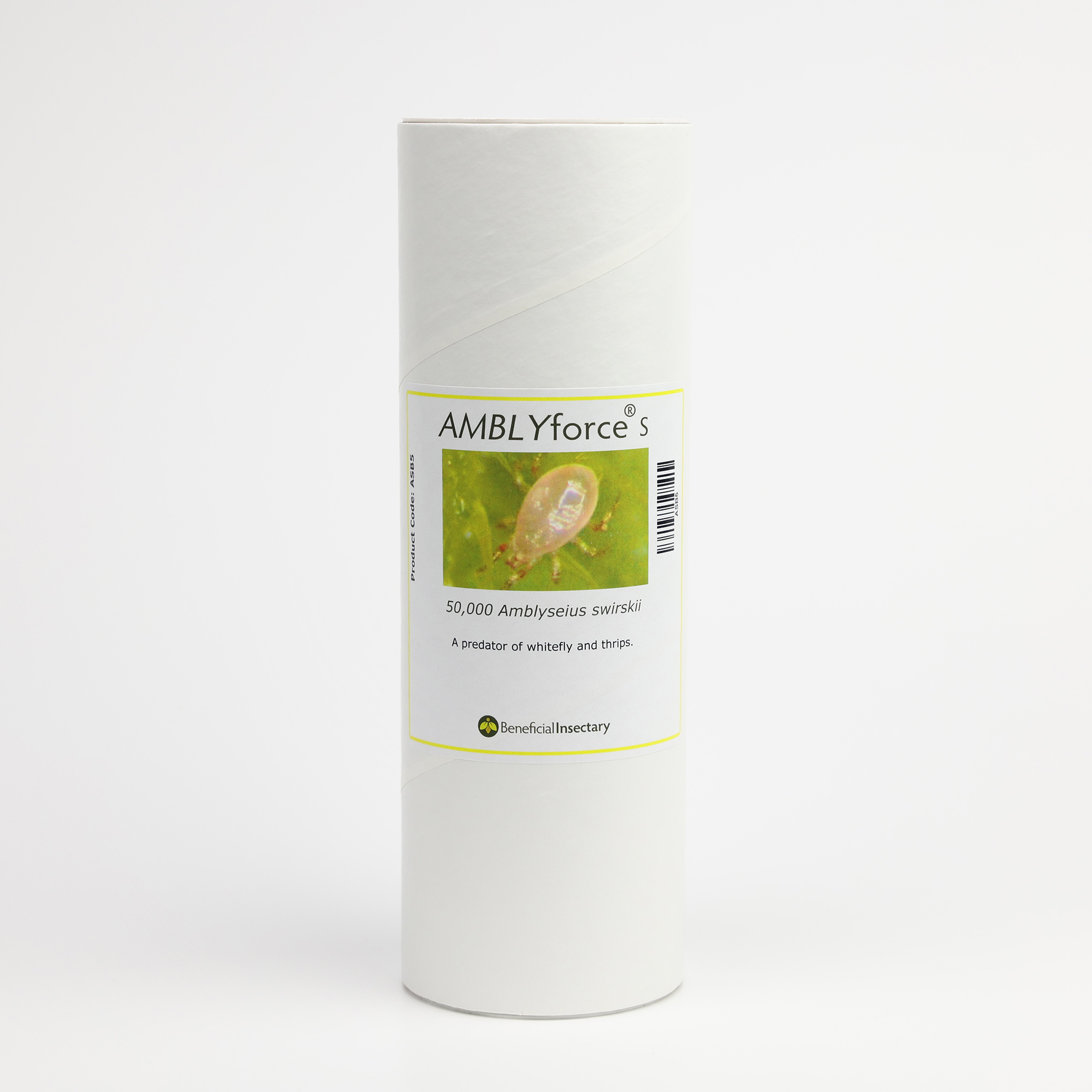
This predator is polyphagous; it eats thrips (the first and second larval instar of western flower thrips) and whitefly (eggs and first larval instar of greenhouse whitefly and Bemisia whitefly). Swirskii can also eat pollen and may be introduced preventively in pollen-bearing crops. The population of the predator is boosted in times of increasing pest pressure. Used preventively, they can control whitefly before they can create honeydew secretions. Easily adapts to high temperatures between 30 °C/86 °F and 35 °C/95 °F. Can be supplementally fed for use in low or non-pollinating crops.
Do not cold store predatory mites for more than 8 hours. Keep in moderate humidity between 55- 65ºF until ready to release.
DO NOT STORE SACHETS IN A REFRIGERATOR, AIR-CONDITIONED ROOM, OR COOLER! These conditions will dry out the sachets and ruin them. It is best to apply sachets as soon as possible upon receipt. If storage is unavoidable, the sachets should be stored at 60°F. Many growers will place the box of sachets underneath a bench in the coolest part of the greenhouse – keeping the humidity high enough so the sachets don’t dry out. Be sure to open the box so that carbon dioxide does not build up and kill the mites.
Bulk Material (tubes)
Release bulk mites in the early or late hours of the day of receipt. If this is not possible, avoid hot/dry times of day for release. After receiving the products, place the tubes or bags on a shelf horizontally until the time to release, allowing the mites to disperse themselves more evenly in the containers. Hold the tube or bag horizontally and gently rotate to ensure the mites distribute evenly when ready to release. Next, unscrew the top, remove the filter paper, and place the lid back on if released from the tube. Gently tap the mites out of the bottle evenly onto the foliage of the plants in the area to be treated. You can also use a whirlybird-type spreader to speed up the process and widen the release area.
Many growers now use modified leaf-blowers to broadcast the mites. You can also use URBs (Universal Release Boxes). Hang URBs from the plant and scoop a small amount of product into each box. Concentrate the bulk of the product at release points on or near the most heavily infested plants. Leave the tube, with the cap removed, in the treatment area 24 hours after release to ensure all mites have exited.
If released from a bag, the process is the same. Open the bag at the seal and sprinkle out the contents evenly onto the plant foliage or into URBs using the dispensing scoop or disperse using a spreader or leaf-blower. Leave the open bag in the crop for 24 hours to ensure all mites are gone.
Sachets on a Stick
Use sachets on a stick for plants in propagation or those too small to support sachets on a hook. For trays or liners, put one sachet on a stick in the middle of each one. You can likely use one sachet for every other tray/liner if they’re touching. Consult your IPM Specialist for specific instructions. For pots and baskets, place the sachet in the center, next to the plant, so the plant grows around the sachet. Be careful not to let the bottom of the sachet touch the soil since this can cause the sachet to wick moisture.
Sachets on a Hook
For larger plants, use a sachet on a hook and hang it on the plant itself close to the stem. Do not lay them flat on the soil since the sachet will likely grow mold underneath it, especially if the plant is top-watered. If the plant is very tall or wide, it may require more than one sachet per plant for adequate control.
Check plants for decreasing populations of thrips larvae.
Scouting for predatory mite adults can be difficult or impossible in many crops. Most predatory mites lay distinct eggs from pest mites which can help, but the most effective scouting method is to look for decreased pest pressure after releases.
Predatory mites are fast-moving and usually not found in large numbers in the same area like pest mites. They often hide in the foliage and ambush their prey but occasionally traverse the upper leaf surfaces.
If used with P. persimilis, please use caution.
If used in a greenhouse with mites and whiteflies, try to clean up honeydew deposits and excessive webbing prior to release.
Try to maintain microclimate humidity at 70%, though this isn’t that difficult in most greenhouses.
Supplement via misting or other methods if things get too dry.
When you receive a sachet from Beneficial Insectary, they are filled with beneficial predatory and feeder mites. These allow for slow, constant releases of predatory mites over an extended period.
These sachets will last up to 5 weeks.
Week numbers are printed on the back of each sachet.
If your sachet is less than 5 weeks old, all you do is leave them in the plant.
Sachets are water-resistant.
The mites reproduce inside and exit from a tiny hole in each sachet.
Sachets older than 5-weeks from today’s week can be checked for predatory mite activity but should be replaced even if observed. Sachets older than 5-weeks from today’s week can be discarded or left in the crop if removal is difficult.
Live-Product: Beneficial Insectary strives to guarantee the live delivery of the freshest organisms to our customers. We offer replacements or credits for any compromised shipments to our customers that report any issues or concerns within 24 hours. These issues or concerns must be relayed before releasing any organisms that are suspected of having viability issues. Please do not discard the product. You may be requested to return the shipment for further analysis.
Establishment of BCAs in Crop Settings: Many variables can negatively or positively impact BCA and pest populations in various crops we work with (pesticide applications, watering practices, improper storage methods, cultural/physical/mechanical controls, etc.). Some beneficial organisms require a steady pest presence as a food source to build their population. Others may require alternate food sources, such as pollen or nectar as an example. While other BCAs have specific photoperiod requirements for success. Due to these variables, we cannot guarantee the long- or short-term establishment of the BCAs we sell after the release of the organism(s). We will not offer refunds, discounts, or other credits on products that have already been released. Please adhere to our “Live-Product” disclosure.
PRODUCT RELEASE METHOD
PRODUCT SPECIFICATIONS
PRODUCT | PACKAGE SIZE Filler/Carrier | LIFE STAGES | PRODUCT CODE | |
|---|---|---|---|---|
AMBLYforce™ S – 25,000
| 1 Liter Tube w/ 80%bran/20%verm
| All | ASB | |
AMBLYforce™ S – 25,000
| 1Liter Tube w/ Bran
| All | ASBN | |
AMBLYforce™ S – 50,000
| 1 Liter Tube w/ 80%bran/20%verm
| All | ASB5 | |
AMBLYforce™ S – 125,000
|
5 Liter Bag w/ 80%bran/20%verm
|
All | ASBG | |
AMBLYforce™ S – 125,000
|
5 Liter Bag w/ Bran
| All | ASGN | |
AMBLYforce™ S – 25,000
| 100 mini sachets(250ea)/hook w/ Bran
| All | A1H | |
AMBLYforce™ S – 25,000
| 100 mini sachets(250ea)/stick w/ Bran
| All | A1K | |
AMBLYforce™ S – 125,000
| 500 mini sachets(250ea)/hook w/ Bran
| All | AS5H | |
AMBLYforce™ S – 125,000
| 500 mini sachets(250ea)/stick w/ Bran
| All | AS5K | |
AMBLYforce™ S – 250,000
| 1,000 Mini Sachets(250ea)/Hook w/ Bran
| All | AS1H | |
AMBLYforce™ S – 250,000
| 1,000 Mini Sachets(250ea)/Stick w/ Bran
| All | AS1K |
RELEASE RATES
CLASSIFICATION | RELEASE INFORMATION |
|---|---|
Shaker Tube | 2-5/sq. ft., bi-weekly, as needed
|
Bulk Bag | 2-5/sq. ft., bi-weekly, as needed. Use provided scoop.
|
Slow Release Sachets | Every 6 ft. of crop row, monthly as needed
|

CANNABIS ALERT: Release rate suggestions on these pages are usually not sufficient for cannabis growers. For cannabis release rates contact us.
Life Cycle
EGG STAGE
- Eggs are approximately 0.15mm
- Murky white to beige
- Placed individually on leaves, most often on leaf hairs or along the midrib
- After 2-3 days, larvae emerge
LARVAL & NYMPHAL STAGES
- Amblyseius swirskii complete 1 larval and 2 nymphal instars before their final molt to the adult life stage
- Larvae are nearly transparent, small, and only have 6-legs
- Nymphal stages darker than larvae, resemble adults with 8 fully formed legs, smaller overall size
- Juvenile stages are usually complete within 10 days of emergence
ADULT STAGE
- Amblyseius swirskii adults are 0.5 to 1mm in length
- Pear-shaped and light beige or milky white
- Development from egg to adult influenced mainly by diet
- Swirskii feeding on live prey develop faster than swirskii feeding on pollen
- Female swirskii will lay up to 38 eggs in their lifetime
